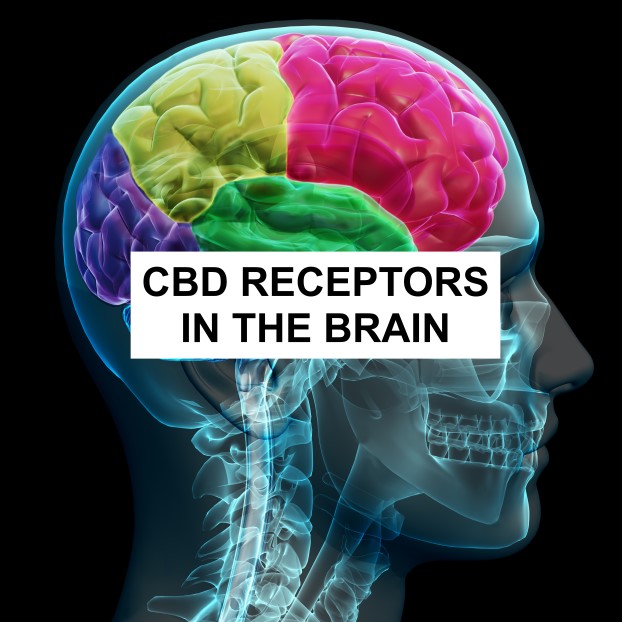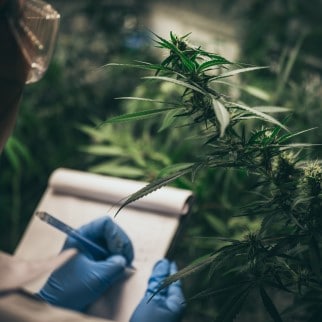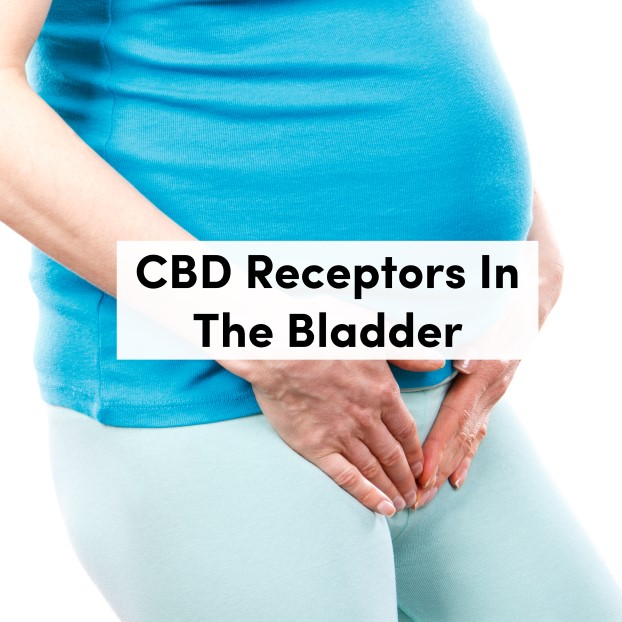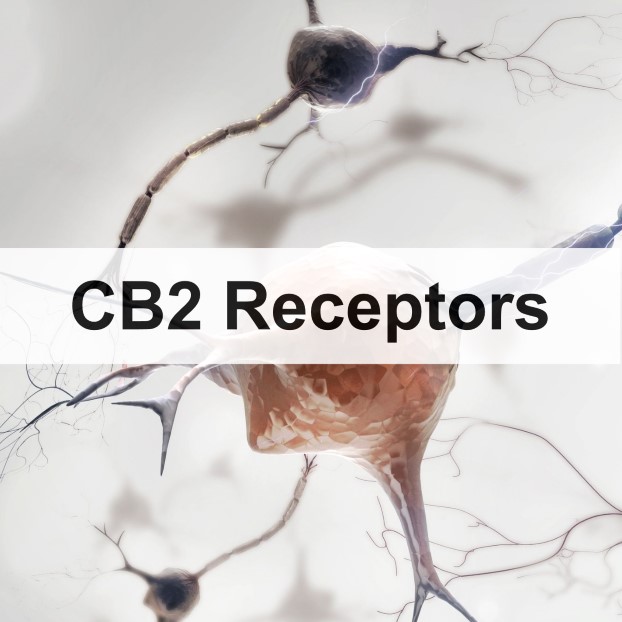Reviewing the Effects of CBD Receptors in The Brain

Posted on February 7th, 2021
For more than 4,000 years, mankind employed the cannabis plant for medicinal and recreational purposes. However, scientific research into its effects only just recently became a thing. Why? Due to a number of cultural taboos and superstitions surrounding it, scientific research halted. Due to that, many questions remain about how cannabinoids and the CBD receptors in the brain interact. So far, the current body of research available hints at some interesting things. The cannabinoids in the plant appear to have tangible psychological and therapeutic effects. Yet, the reasons of just why that is remains elusive at best. Meanwhile, as the popularity of cannabis only rises, people increasingly want to understand exactly how it works.
This article’s purpose is to look into CBD receptors in the brain and what we know so far about them.
Receptor Systems in The Brain
The brain has highly specialized cells referred to as neurons. Every neuron connects to several others through structures called synapses. Those lines through which one neuron can interact with another by discharging neurotransmitters, which are chemical messengers. The sensitivity of a neuron to a particular neurotransmitter is contingent on whether it has a receptor that fits it. If a neuron has receptors that are compatible with a certain neurotransmitter, then it will react to that transmitter. Otherwise, it cannot. Generally, neurons have several neurotransmitter receptors that allow them to react to specific neurotransmitters while ignoring others.
Neurotransmitters are something that your body does produce on its own. Yet, CBD Receptors in the brain will not only respond to neurotransmitters made naturally by your brain. They will also respond to chemical messengers originating from outside your body from sources such as plants. The cannabis plant would be a perfect example.
When you inhale some vapor or ingest an edible, you’re basically permitting compounds from the plant to gain entry into your body. They will pass through your bloodstream, eventually reaching into your brain. When they enter your brain, these plant compounds will affect brain activity by interacting with receptors located on the neurons.
CBD Receptors in The Brain, What Are They?
The human body features something called CBD receptors that are part of your endocannabinoid system (ECS). The ECS is a vast network of neurotransmitters and CBD receptors that extends all over your body. Said receptors play key roles in regulating bodily functions like your mood, memory, pain sensation, and appetite. There are two kinds of CBD receptors CB1 and CB2. The CB1 receptor is extensively present in your brain, kidneys, liver, and lungs. The CB2 receptor, on the other hand, is in the immune system and red bone marrow cells.
In general, cannabinoids link to particular CBD receptors in the brain. Neuroscientists also found a link between the cannabinoid system and specific serotonin receptors. Serotonin, meanwhile, is one neurotransmitter involved in the stabilization of your mood.
Exogenous Cannabinoids and their Receptors
The primary active constituent in the intricate mixture of cannabinoids that are present in the plant extracts of cannabis is THC. Tetrahydrocannabinol, or THC, is basically a sticky resin that’s not water-soluble. Smoking is the most efficient way of ingesting the compound. Seasoned smokers can measure their dosage their depth, and frequency of inhalation. Theoretically, you can consume cannabis extracts like THC orally in fat-containing foodstuffs or dissolved in special oils.
The same thing applies to other cannabinoids like CBD, the second most famous cannabinoid. However, know that the way you consume it affects the amount of time it takes for it to take effect. The cannabinoid compounds family function as agonists at the CB1 receptor, the only kind of CBD receptor found in the brain. The second cannabinoid receptor, CB2, you can find in varying quantities in many places, including your immune system. Both these receptors belong to the G-protein class, and their stimulation links to the inhibition of adenylate cyclase activity.
Endogenous Cannabinoids
After discovering the role of specific CBD receptors, research sought after naturally occurring ligands of these receptors. This resulted in the discovery of a sequence of arachidonic byproducts with effective actions on cannabinoid receptors. They include 2‐arachidonylglyceryl ether, 2‐arachidonylglycerol, and anandamide. Out of these derivatives, anandamide is the most researched ligand so far. These ligands also go by the name of ‘endocannabinoids,’ and they exist in small quantities in the brain and other tissues. Their name is ‘endocannabinoids’ because they are cannabinoids endogenously produced by your own body. However, the body only produces so many of them. It is not uncommon for the amount produced to be unable to cover the body’s demand. In those cases, you could use for a way to supplement your ECS; that way are the plant-based cannabinoids from cannabis.
Neuroanatomical Distribution of CB1 Receptors in The Brain
Researchers mapped the dissemination of cannabinoid receptors in the brain of mice during autoradiographic research. The mapping revealed that CB1 receptors are primarily present in the nerve terminals and axons. For the most part, they are absent from the dendrites or neuronal soma. The discovery that cannabinoid receptors are largely presynaptic is consistent with the suggested function of cannabinoids in moderating neurotransmitter release.
The cerebral cortex, especially the frontal part in males, has high concentrations of CB1 receptors. There are also high concentrations in the cerebellum and the basal ganglia. When it comes to the limbic forebrain, CB1 receptors locate in the anterior cingulate cortex and hypothalamus. The hippocampus also has high concentrations of CB1 receptors. The relative lack of cannabinoid receptors from the brainstem nuclei may be responsible for the relative lack of deadly consequences to consuming cannabinoids in exaggeratedly large doses.
Effects of Cannabinoids on Synaptic Function
There are quite a lot of things consuming cannabinoids does to us. Chemically speaking, these are some of those:
Inhibition of Neurotransmitter Release
The localization of CB1 receptors in the presynaptic region suggests that cannabinoids modulate neurotransmitter release from axon terminals. Early studies revealed that THC repressed the release of acetylcholine from an electrically stimulated guinea-pig ileum. Researchers observed the same inhibitory properties of other cannabinoids on the discharge of various neurotransmitters from CNS neurons in several subsequent research studies. The neurotransmitters involved include dopamine, noradrenaline, 5-HT, GABA, acetylcholine, and L‐glutamate.
Even though many of these research studies used mice as subjects, early evidence suggests they work similarly for human brain tissue.
Biosynthesis of Endocannabinoids
In spite of their identical chemical structures, endocannabinoids form through distinctive biochemical pathways. Anandamide formation results from hydrolysis of the N‐arachidonoyl phosphatidylethanolamine precursor. On the other hand, 2-AG forms by the cleavage of an inositol‐1,2‐diacylglycerol catalyzed by the enzyme phospholipase C. While both 2-AG and anandamide can stimulate CB1 receptors. It’s not yet clear if they both work as endocannabinoids and if their release and synthesis modelate independently.
The amounts of 2-AG in the brain (2-10 nmol/g) are 50-1000 times higher compared to the levels of anandamide (10-50 pmol/g). There is some proof separating the control of their biosynthesis. Activation of the release of glutamate from Schaffer collaterals in hippocampal slices of rats increased 2-AG levels, but not anandamide’s. Another research study involving vivo microdialysis revealed that administration of dopamine D2 receptor agonist resulted in the increased discharge of anandamide without affecting 2-AG levels.
Effects of Cannabinoids on CNS Function
Here are a couple of ways in which cannabinoid might have notable effects on you:
Psychomotor Control
Given the high presence of CB1 in the cerebellum and basal ganglia, it’s no surprise that cannabinoids intricately affect psychomotor functioning. The effect of cannabinoids in rodents showed that it had a triphasic effect. Low THC doses (0.2 mg/kg) in rats showed diminished locomotor activity, while high doses (1-2 mg/kg) triggered movements. Catalepsy also occurred at a 2.5 mg/kg dosage. In mice treated with THC, a ‘popcorn effect’ happened. Mice sedated with the drug jumped in response to tactile or auditory stimuli. What’s interesting is that the CB receptor antagonist rimonabant triggered locomotor functioning in mice. Thus, proving that tonic activity in the ECS contributes to spontaneous activity levels. In part, these cannabinoid effects may be a result of actions at striatal or cerebellar receptors.
In humans, cannabis use causes impaired functioning psychomotor control due to THC. What that means is that you get disoriented and erratic in your movement when you get high.
Cannabinoid Mechanisms in The Hippocampus & Effects on Memory
Among the well-established impact of acute intoxication with cannabis in humans is short-term memory impairment. Many research studies show significant effects when it comes to short-term memory, especially regarding levels of attention. Animal research studies also prove that THC causes deficits when it comes to short-term memory in spatial tasks. Rimonabant reversed the effect, demonstrating that the CB1 receptor facilitates both. These effects apparently happen in the hippocampus because CB1 receptors are in high concentrations there.
What Cannabinoids and The CBD Receptors in The Brain Ultimately Do
In short, this read focused on THC and the CBD receptors in the brain because THC has the most visible effects there. Since THC is the psychoactive component of cannabis, it will make you get high and experience both sensory and physical impairment. CBD, on the other hand, interacts differently with CB1 and might help you manage anxiety and depression. Finally, CBD does also soften somewhat THC’s psychoactive effects when taken in sufficient amounts. Thus, if you want ingested THC and want to somewhat lessen the impairment, CBD oils are an option. Regardless, it’s best you experiment with varying doses on your own before attempting to apply this in your day-to-day.





